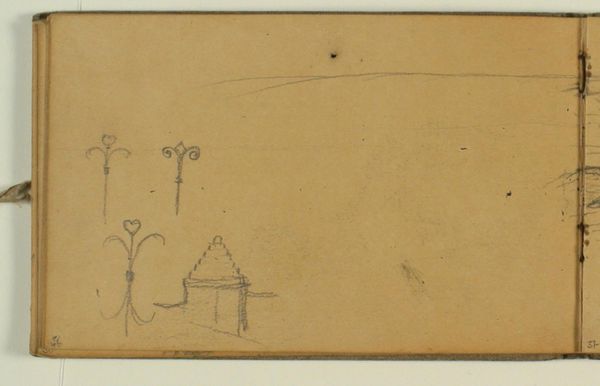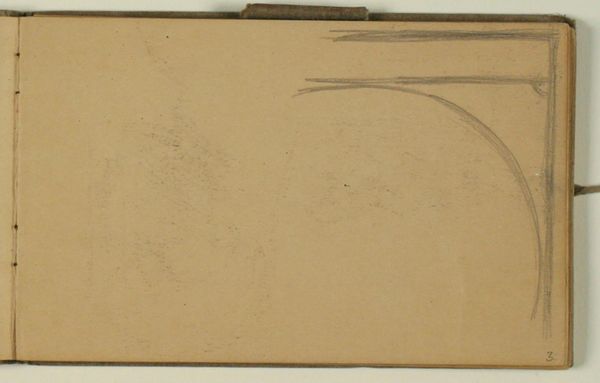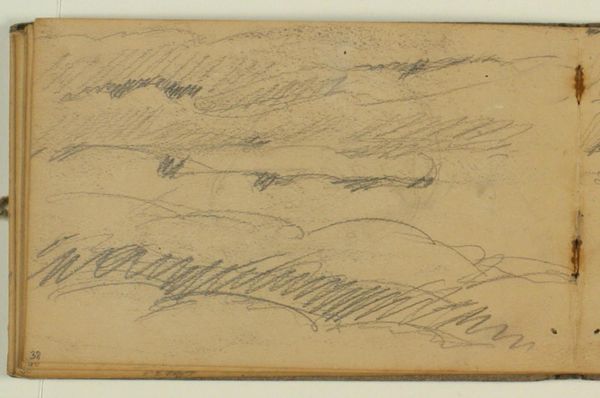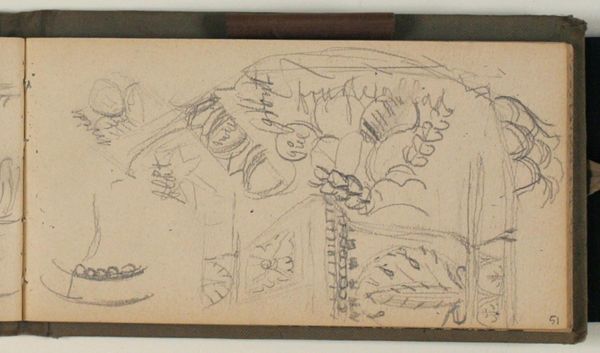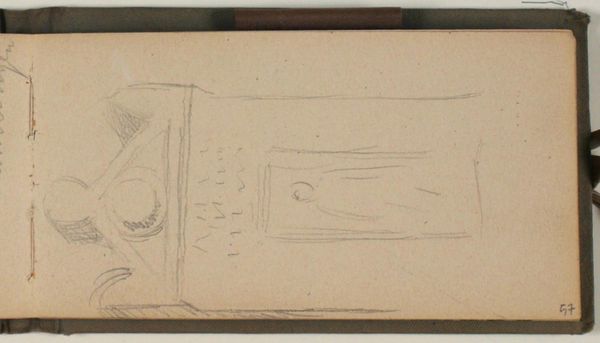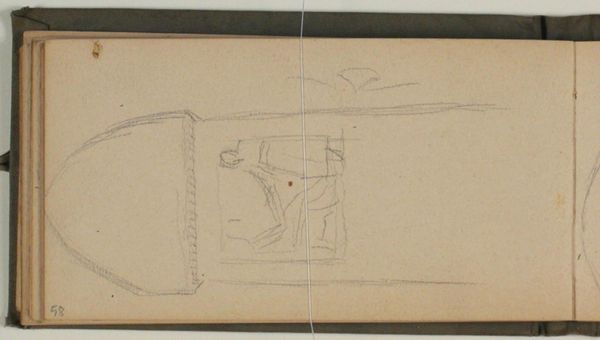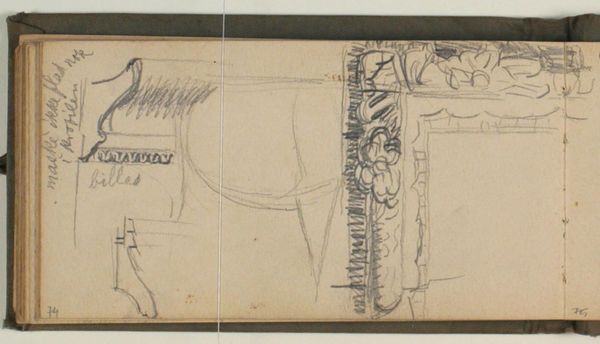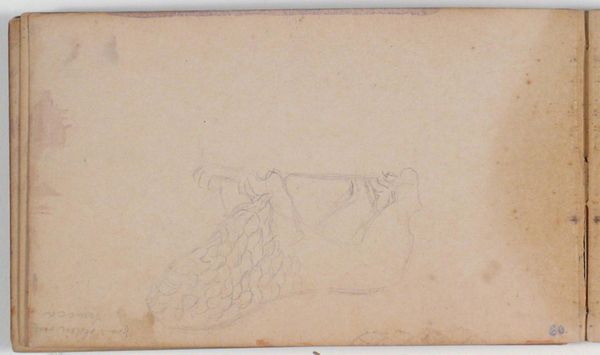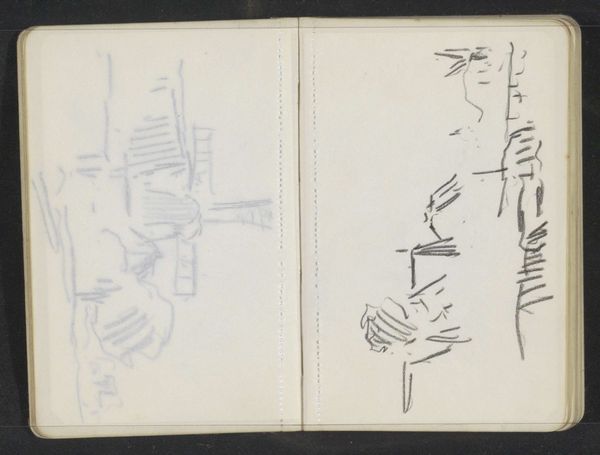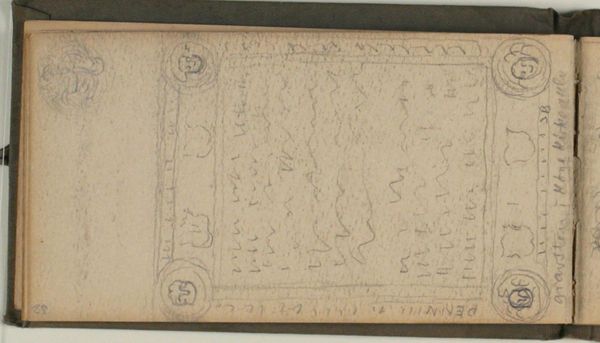
drawing, paper, pencil
#
drawing
#
art-nouveau
#
paper
#
coloured pencil
#
pencil
#
decorative-art
Dimensions: 114 mm (height) x 183 mm (width) x 9 mm (depth) (monteringsmaal), 113 mm (height) x 182 mm (width) (bladmaal)
Editor: Here we have "Ornamentstudier" by Niels Larsen Stevns, created sometime between 1900 and 1904. It looks like a page from a sketchbook, featuring pencil and maybe some coloured pencil on paper. There’s something so raw and immediate about seeing these initial ideas laid out. How would you approach interpreting a piece like this? Curator: The materiality of this sketchbook page is key. It's not just about the decorative designs themselves but the very act of creation, the labor involved in producing these ornaments. Think about the social context – this is Art Nouveau, a movement reacting against industrial production, yet these sketches might be intended for mass production. Do you think this contradiction matters? Editor: Absolutely, it complicates things! On the one hand, you have this handmade quality in the sketches, but the end goal could be something manufactured on a large scale. Curator: Exactly! Consider the tools: the pencil, the paper. They were becoming more widely available, impacting who could create art. What was previously confined to workshops could now be explored by a broader segment of society. Editor: So, seeing these drawings less as finished artworks and more as a record of a process within a specific economic and social framework. Curator: Precisely. These "ornament studies" point towards the complex interplay between handmade production, industrial potential, and shifting class dynamics at the turn of the century. Editor: I hadn’t considered that. It reframes the way I see these decorative designs; they’re not just pretty, but speak to broader production possibilities. Thank you! Curator: Indeed! It reveals how an apparently simple sketch reveals this convergence of material practices and broader social changes.
Comments
No comments
Be the first to comment and join the conversation on the ultimate creative platform.
